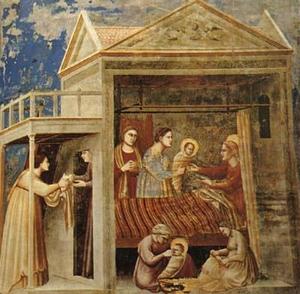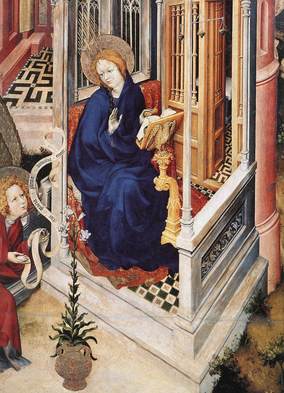 Mary would never see the world in the same way again because she had conceived beneath her heart, The Word, the Son of God made flesh within her. The Word from the mind of God now in her being…She would now have to see everything through the eyes of that Word and everything would change. “Nothing would again be causal and small, but everything with light invested,” (J. Duffy, “The Annunciation”). Christ, the Light of the World.
Mary would never see the world in the same way again because she had conceived beneath her heart, The Word, the Son of God made flesh within her. The Word from the mind of God now in her being…She would now have to see everything through the eyes of that Word and everything would change. “Nothing would again be causal and small, but everything with light invested,” (J. Duffy, “The Annunciation”). Christ, the Light of the World.
Tag: Blessed Virgin Mary
The Visitation as a model for Christian life
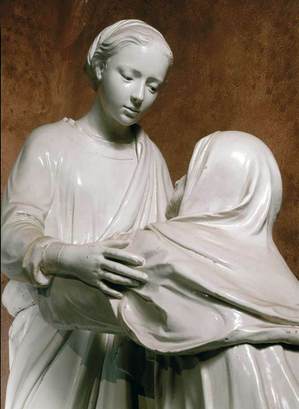 Advent is moving us closer and closer to the Incarnation of the Eternal Word of God–Jesus. Among the rich readings of sacred Scripture we have in the Liturgy, there is today’s that recalls for us Mary’s visiting her cousin Elizabeth who is pregnant with John the Baptist. The Visitation is the second of the Joyful Mysteries of the Holy Rosary.
Advent is moving us closer and closer to the Incarnation of the Eternal Word of God–Jesus. Among the rich readings of sacred Scripture we have in the Liturgy, there is today’s that recalls for us Mary’s visiting her cousin Elizabeth who is pregnant with John the Baptist. The Visitation is the second of the Joyful Mysteries of the Holy Rosary.
Our Lady of Guadalupe, Partroness of America
Immaculate Conception of the Blessed Virgin Mary
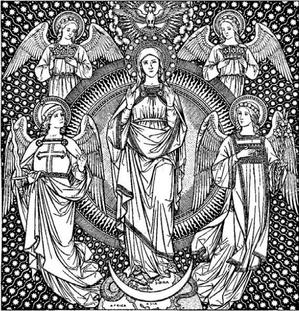 The dogma of Mary’s Immaculate Conception was given to us by Pope Pius IX and proclaimed in the document, Ineffabilis Deus (1854), solemnly defining a clear and consistent teaching of the Church since 33 AD.
The dogma of Mary’s Immaculate Conception was given to us by Pope Pius IX and proclaimed in the document, Ineffabilis Deus (1854), solemnly defining a clear and consistent teaching of the Church since 33 AD.
If you ask the question: What can you tell me about Mary as Patroness of America? Boston’s Archbishop (later Cardinal) Richard Cushing wrote an answer.
Famously, the 23 US bishops in 1846 (note: nearly a decade before the dogma’s definition) wrote to the Pope asking for Mary under the title of the Immaculate Conception to be bestowed on the country’s young Church. The bishops wrote:
We take this occasion, brethren, to communicate to you the determination, unanimously adopted by us, to place ourselves and all entrusted to our charge throughout the United States, under the special patronage of the holy Mother of God, whose Immaculate Conception is venerated by the piety of the faithful throughout the Catholic Church.
By the aid of her prayers, we entertain the confident hope that we will be strengthened to perform the arduous duties of our ministry, and that you will be enabled to practice the sublime virtues, of which her life presents the most perfect example.
Pastoral Letter of the Bishops of the United States
Sixth Provincial Council, Baltimore, 5 May 1846
Our Lady of the Miraculous Medal
Today we celebrate the Feast Day of Our Lady of the Miraculous Medal. On this day, November 27th, in 1830, the Immaculate Virgin Mary appeared to Saint Catherine Laboure in the chapel of the motherhouse of the Daughters of Charity in Paris.
At one point during the apparition Catherine saw Our Lady standing on a globe, with dazzling rays of light streaming from her outstretched hands. Framing the figure was an inscription: O Mary, conceived without sin, pray for us who have recourse to thee.
Mary spoke to Catherine: “Have a medal struck upon this model. Those who wear it will receive great graces.” The Medal of the Blessed Virgin Mary, popularly known as the Miraculous Medal, was approved by Pope Leo XIII on July 23, 1894.
For more info, visit…
Presentation of the Blessed Virgin Mary and Benedictine Oblation
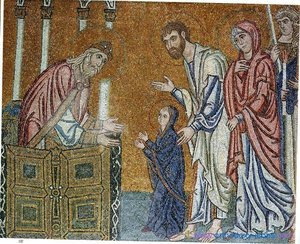 As we Venerate the glorious memory of the most holy Virgin Mary, grant, we pray, O Lord, through her intercession, that we, too, may merit to receive from the fullness of your grace.
As we Venerate the glorious memory of the most holy Virgin Mary, grant, we pray, O Lord, through her intercession, that we, too, may merit to receive from the fullness of your grace.
Our Lady of the Rosary
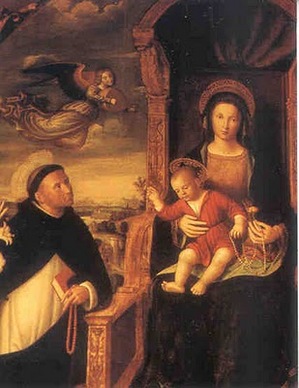 The rosary is essential to the spiritual life of Christians. We ought to live the rosary.
The rosary is essential to the spiritual life of Christians. We ought to live the rosary.
The rosary is a practical study of sacred Scripture in the we remain faithful to the call to be close to Christ through constant a memory of the life, death, resurrection and ascension of the Lord. Theologically, we call this the Paschal Mystery.
The rosary, popularly seen as a Marian prayer (i.e., connected to the Blessed Virgin Mary), but really it is a Christological prayer.
The supreme victory promised by God through the intercession of Mary is none other than being generated by love and the grace of conversion. Praying the rosary keeps us in touch with Christ, the Savior, the Good Shepherd.
Read more in the John Paul II teaching found in his apostolic letter, Rosary of the Virgin Mary, and a more of the feast today given by CNA.
Our Lady of Sorrows
Why the Sorrowful Mother? Why do Catholics honor Mary, the Mother of God with the title of “Sorrows”? Is it an honor to be called such? Some good questions, I think. Mark Miravalle answers the question this way:
We could just as well ask St. Paul why he instructs all Christians to “make up what is lacking in the sufferings of Christ for the sake of his body, which is the Church” (Colossians 1:24).
We Christians, too, will suffer and do suffer. Our suffering has the capacity to release a portion of the infinite graces merited by Jesus at Calvary, what theologians call “objective redemption.” But as these redemptive graces of Jesus must be personally received by the human heart, every Christian has a role in this mysterious release and reception of grace which theologians call “subjective redemption.”
Mary alone, as the “New Eve” with Jesus the “New Adam,” participates in both objective and subjective redemption: both in the historic acquisition of redemptive grace and in the providential release of redemptive grace. Blessed John Paul would teach of his mother and ours that Mary’s intensity of suffering at Calvary was a “contribution to the redemption of all” (Salvifici Doloris, 25).
Most Holy Name of Mary
Nativity of Mary
The feast of the nativity of the blessed Virgin Mary, born from the tribe of Judah, from the seed of Abraham and the race of King David, from whom the Son of God was born, made man through the Holy Spirit, that men might be freed from the ancient servitude of sin.
“…this feast of Mary’s birth should remind us of God’s loving plan” (Abp. Charles J. Chaput, Installation homily).



